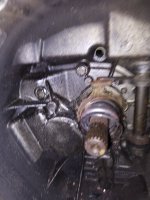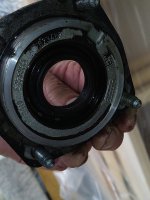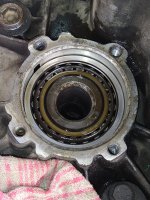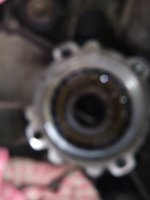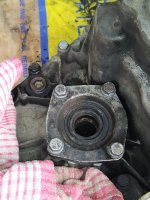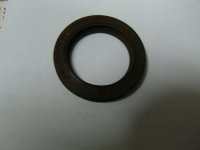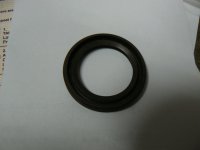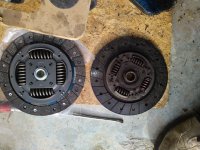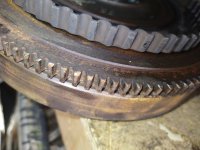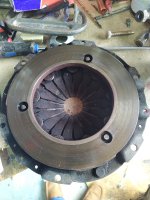Of course I'm now thinking of other "things" it's advisable to do when installing your new clutch and what to do to the splines comes to mind.
We'll assume the new clutch plate has nice clean splines but it's worth meticulously cleaning the gearbox input shaft splines and then lubing them to ensure the new clutch plate doesn't bind later on. The trouble with greasing clutch splines is that folk often don't do a very good job, or don't bother at all, cleaning up the splines. They then either don't grease the splines at all or over grease them so that the grease spins off and contaminates the friction face of the new driven plate. Finally, even if they do use a lubricant, they use an unsuitable product - for instance Copper grease is a favourite.
So what to do? First off buy a manufacturer approved clutch grease. I use Sachs - a major manufacturer of clutches and it just happens it's what my local factor stocks - any make will do but make sure it's recommended for clutches so specially designed to resist very high temperature and being flung off.
https://www.buycarparts.co.uk/sachs...065Anz1Ta9yUoJ5h-HqXrReQZndxSS9caAlsgEALw_wcB Then make sure the splines are clean of old clutch debris, oil and rust. I've found the best way to apply the grease is to apply a LIGHT coat of the grease to the splines on the gearbox - I use an old toothbrush - and work the new driven plate on and off the shaft a few times which spreads the grease into the splines on the driven plate. Working the driven plate on and off of the gearbox input shaft splines will cause a wee build up of grease on the ends of the splines of the driven (friction) plate splines so wipe this build up off. If you look into the splines there should be just a light smear of grease visible. So that's your new driven plate ready for installation. Look now at the gearbox input shaft and there's likely to be quite a bit of grease hanging around. So take a clean cloth, or bit of industrial paper towel (I have a roll of the blue stuff) and wrap it round the shaft then use it to wipe off all the grease that's lying around on the outside of the shaft/splines. This should leave a light coating of grease in the splines themselves (so what I mean is you don't clean out each individual spline). The object of the exercise is to leave a coating behind which will inhibit corrosion and keep the driven plate free to move linearly on the shaft to stop the lining binding against the flywheel without leaving behind great gobs of the stuff to get thrown off and contaminate the friction face. In this case less is definitely best.
Here's a couple of texts from the professionals:
For more than 100 years, SACHS has stood for German brand quality. The products stand out with their safety, innovation, durability and reliability.

aftermarket.zf.com
and:
ZF Services UK outlines best practices for hub spline greasing and highlights some of the errors that should be avoided.

cvwmagazine.co.uk
I've seen a lot of clutches ruined by well meaning people applying too much grease and there's not way to effectively clean the contaminated result so a new plate is the only answer - Or "Let it settle down sir, it just needs to bed in for a few thousand miles" by which time the unscrupulous will hope the customer has got used to his/her grabbing clutch and just doesn't pursue it.
By the way, you can expect a new clutch to feel different, sometimes quite different. higher or lower bite point for starters? - depending on how bad the old clutch has been - because the car's regular driver will have been compensating for the worn clutch and this has, to a greater or lesser extent, become what he/she expects it to feel like. However it shouldn't grab badly or slip under power. If it's behaving reasonably then definitely give it maybe a week or two of normal daily driving to bed the friction faces in before starting to worry something may be a real problem


